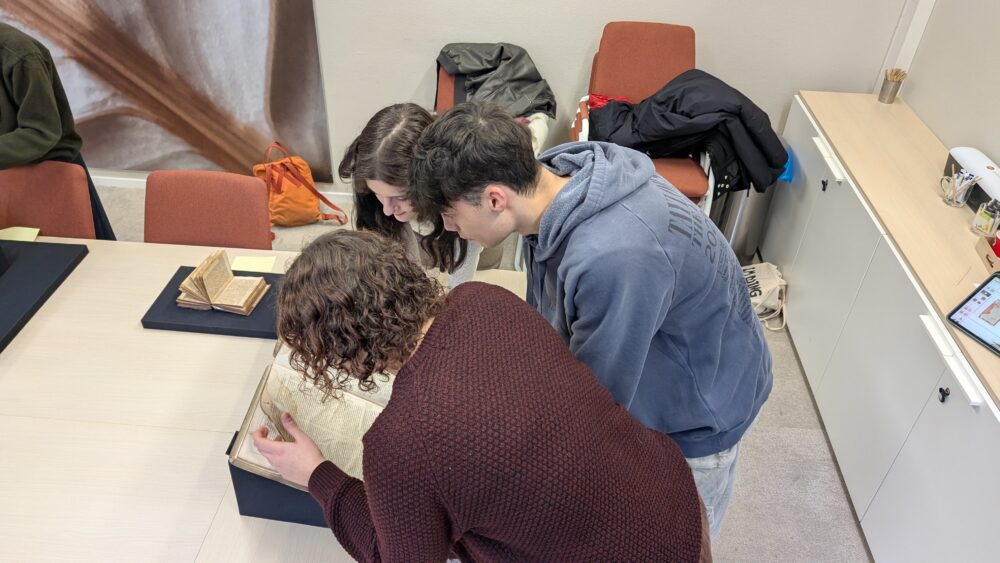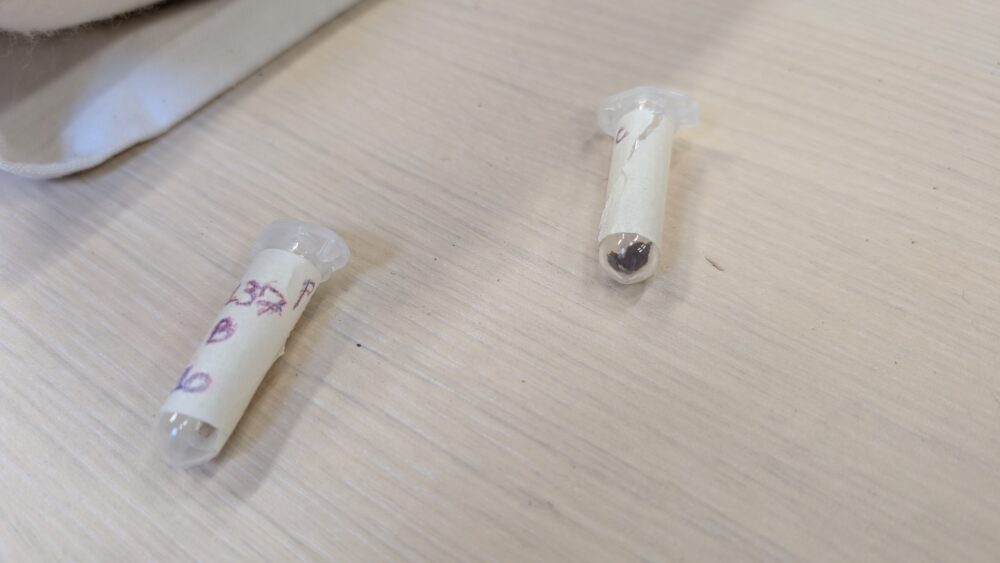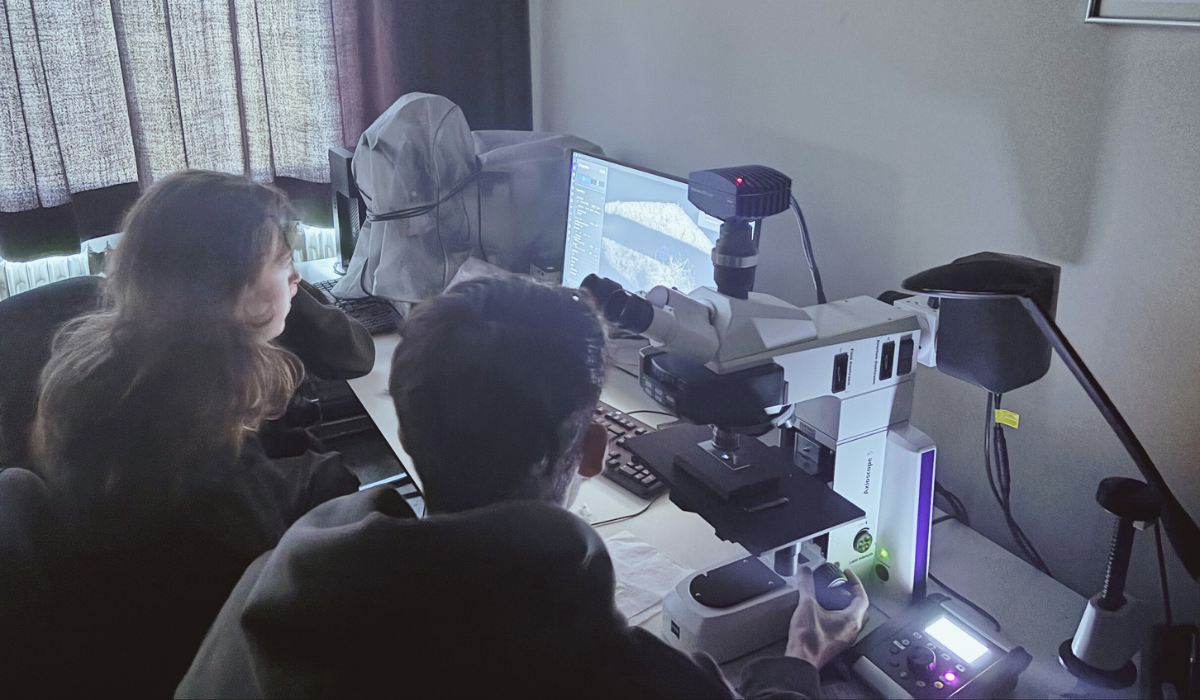This level 2000 project is an extension of last year’s Level 1000 project, in which students focused on visual examinations of damaged books, research on scientific methods, and formed recommendations for further scientific study of the materials. The recommendations shaped the basis for this project, which proposed the use of visible light and UV microscopy. Using this method students identified both late-stage and early-stage foxing, even in pages that appeared undamaged.
Examining foxing with microscopy
Using visible light and UV microscopy, students were able to detect both late-stage and early-stage foxing, including in pages that appeared undamaged to the naked eye. To carry out the analysis, samples were collected from seven selected books, chosen for their varying degrees of foxing. Small fragments were carefully removed from both foxed and non-foxed pages using precise tools, ensuring minimal impact on these delicate historical materials. Each sample was then stored in labeled Eppendorf tubes, and the entire process was meticulously documented.

Students browsing through the books

Students carefully taking samples

Samples were stored in Eppendorf tubes
Advanced imaging techniques at SRAL
The actual analysis took place at SRAL (Stichting Restauratie Atelier Limburg), a leading conservation institute. Under controlled conditions, students examined the samples using visible light and UV microscopy, capturing high-resolution images that revealed key differences between affected and unaffected paper fibers. Notably, UV microscopy proved to be particularly effective in identifying early-stage foxing, which is not always visible under normal lighting conditions. This technique allowed students to pinpoint subtle chemical and structural changes in the paper, which could help predict and prevent further deterioration.
Implications for book reservation
This research highlights the potential of UV microscopy as a tool for monitoring and mitigating book damage. To enhance our collection management plans, a better understanding of the material chemistry is required. This would be possible with further research in the laboratory. This project showcased the important role of interdisciplinary collaboration between science, engineering, and cultural heritage studies.


0 Comments